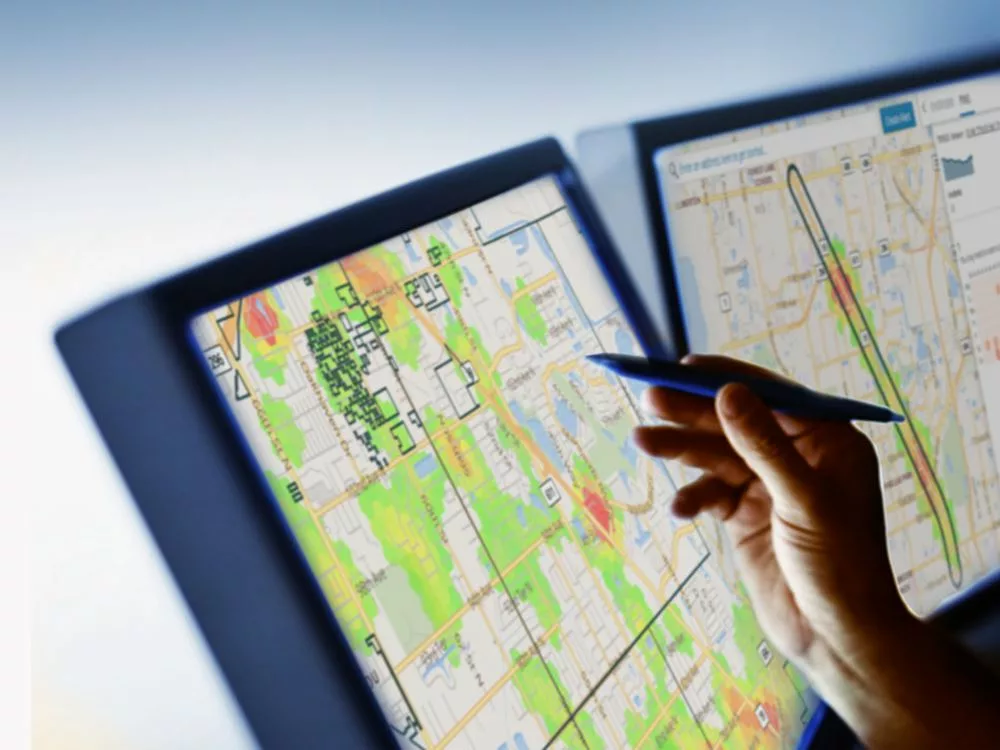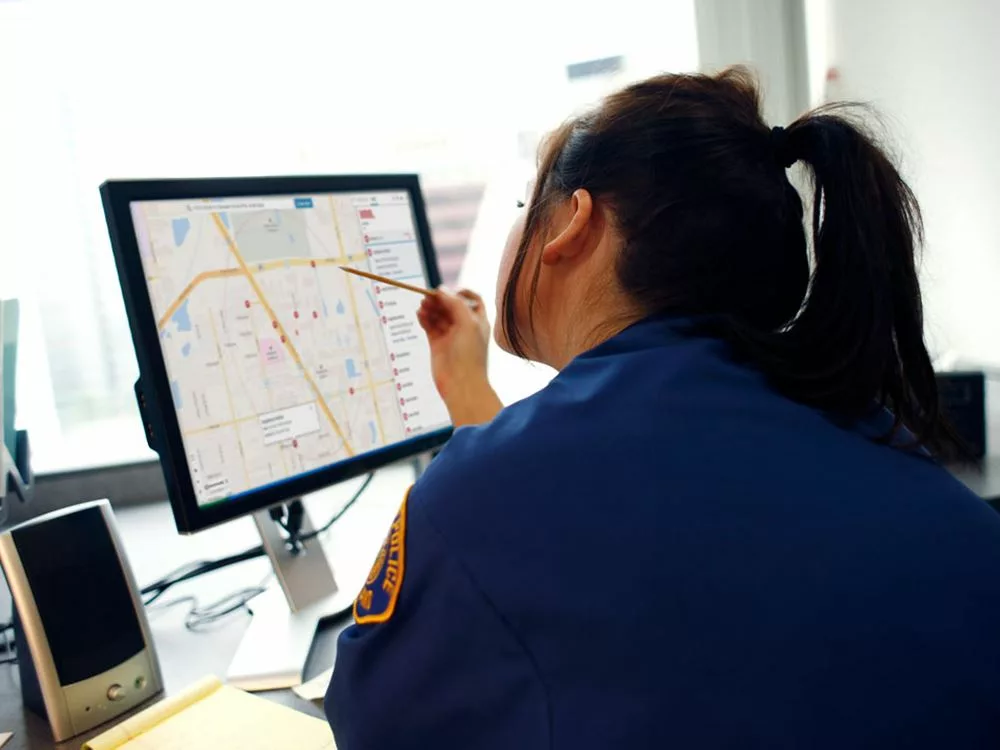Policymakers need useful, consistent, and precise data that can help them easily and quickly understand how individuals move through the justice system. It also helps them understand how economic and policy changes can impact the safety of citizens. For government agencies across the country, actionable information can be difficult to find. These agencies often collect important data, but it may not be analyzed, shared, or acted upon. Agencies lack the organizational resources, ability, and time to make data-informed decisions.
Many government agencies today understand the need for aligning the data that is available from various sources and analyzing it, but not many of them have the plan to make it happen. The recently launched Justice Counts initiative is one such project that unites behavioral health, corrections, law enforcement, and policymakers to help them make informed decisions based on cohesive data. Ultimately, government agencies need to combine data from different organizations to make decisions that affect public safety. This unification can result in aligned and efficient decision-making.

The changing landscape of public safety
The changing landscape of public safety impacts every discipline, such as law enforcement, fire, and EMS. Traditional crimes are decreasing in the Western world because of prevention and enforcement programs. On the other hand, complex offenses like cybercrime and human trafficking are more prevalent. These complex cases take more effort and time to solve, so investigations need more public safety resources. There is a massive increase in training, time, capabilities, and finance required for managing and securing digital evidence. Many municipalities are currently under pressure to cut resources and save on costs.
Another challenge faced by agencies is understanding surrounding the agency’s mission. This can undermine its efforts to secure public funding, build engagement, and launch proactive programs. Agencies need to harness the power of data analytics to combat misconceptions and increase transparency. Leaders in public safety should be able to show government officials and citizens the demands they deal with and the way they spend their resources and time. This provides a clear picture of the policies. Emergency, fire, and police chiefs can gain more support for technologies, priorities, and policies if they educate the public about how they use data. This transparency can also help them gain assistance from officials. For enhanced public safety, it is also important to focus on public engagement, especially using social media.
Public safety leaders must take the time to hear the concerns and questions of the public through online feedback or open forums. Understanding the expectations and knowledge of the citizens can help them gather the data required to address these issues. Agencies can also utilize digital resources to post online statistics related to performance measures and safety issues for community-wide, easy access. Concrete protocols and systems should be in place to remove ambiguity and to track operational data. Emergency departments, for example, should have transparent information about response times and how it is measured. Operational data must provide robust audit and security trails to showcase integrity.
Answering these questions can help agencies build trust with the public. This information can also help the public understand the challenges faced by public safety agencies and how they work. Many countries around the world are increasingly backing this effort.
Understanding data analytics
Techniques utilized for analyzing raw data to extract relevant insights, trends, and information is known as data analytics. This process includes data collection, organizing data, storing data, and performing statistical analysis. Conclusions can be drawn from data once it is collected. and these insights can be used for making predictions, decision-making, business processing, and problem-solving so businesses and agencies can make informed decisions. Data analytics relies on many disciplines like computer programming, statistics, and mathematics.
Data analytics is used in a wide range of sectors, such as education, finance, healthcare, and more. Enrolling in online safety degree programs like the one offered by Wilfried Laurier University can help you learn the fundamental skills needed to keep citizens safe from terrorism, natural disasters, crime, and other threats. Since the program is created in alignment with Public Safety Canada, it is an incredibly effective way to contribute to public safety. Data analytics is also used by law enforcement agencies to prevent and predict crimes.
Data analytics and public safety
Data analytics can effectively detect patterns in large volumes of data. This process was usually done manually, but data analytics has the potential to make this process more efficient. Human factors like experience and intuition are still relevant, but data analytics can provide them with actionable intelligence so they can make better decisions and quickly intervene when needed. This level of change requires a transformation in technology, approach, and thinking for public safety organizations. Many commercial organizations, particularly in the financial industry, have already made the leap. Due to the high levels of credit card fraud cases, financial organizations adopted chip and pin card technology and shifted to analytics to prevent and detect fraudulent charges on credit cards. Understanding how other commercial organizations achieved this transformation through technology, cultural change, developing intellectual property, retraining staff, and re-engineering is a great way for public safety organizations to adapt quickly.
The goal of public safety agencies is to identify threats, just like financial organizations. The approaches and tools to be used are also quite common. There is often huge resistance in public safety organizations because of the old-school culture, and agencies are often not keen to make changes. It is important to remember that data analytics provides an opportunity to make security policies and decisions more efficiently based on evidence. Using data analytics does not make decision-makers irrelevant. It helps make them more effective.
Data analytics for crime prediction
There are many benefits that public safety organizations can enjoy by switching to big data. When used the right way, data analytics can provide many helpful insights. These insights can be used for predicting crimes so agencies can intervene before they occur. This process usually utilizes predictive analytics techniques like reviewing historical data so geographical hotspots can be forecasted. This information can help agencies direct appropriate resources in the right direction to prevent crime.
Data analytics can also be used in a number of different ways to predict crime, as discussed below:
- Criminal profiling refers to building a description of a perpetrator. This description can be incredibly helpful in capturing a perpetrator, and it usually includes relevant clues as well as behavioral connections that these clues share. Criminal profiling can be quite time-consuming and requires a lot of time. Machine learning techniques can be used to spot patterns easily so that a detailed criminal profile can be created in less time.
- Data analytics can also be used for predictive policing. This process involves the application of analytic tools and statistics to pinpoint geographical locations with the highest amount of crime. This information can help organizations dedicate additional resources to those locations. Predictive policing is already used in many cities like London, Chicago, and New York, leading to a major reduction in robberies, burglaries, and vehicle theft.
- Data can also be incredibly helpful against sexual abuse crimes. Data analytics allows police investigators to sort through large volumes of data quickly. Advanced data analytics enables officers to sort through videos, images, and texts to find people trading images of minors.
- Data mining is a helpful tool for identifying various patterns, such as domestic violence, murder, and theft.
- Data analytics is particularly helpful in predicting financial crimes such as insider trading, insurance fraud, healthcare fraud, and money laundering. Software is used for analyzing unstructured and structured data to find potential evidence. Additionally, the information uncovered from data can also be helpful when pressing charges against individuals involved in financial fraud.

Data analytics for crime prevention
It is already clear that data analytics is a crucial resource for predicting crimes, as discussed in the above section. It can also help public safety agencies in several other ways. Throughout the world, there is a growing need to prevent crimes, rather than just solve them. Data analytics could prove to be helpful for crime prevention. Crime prevention techniques and measures are currently being used by a number of law enforcement agencies around the world, such as for the prevention of traffic accidents, crowd management, border protection, and for providing faster response times to incidents.
Here are a few ways data analytics can be used to prevent crimes:
- Criminal profiling is used to predict crime, but it can also be an effective measure to prevent crime. Criminal profiling can be used to compare the behavior of criminals to those of non-criminals. This can be a helpful method of spotting criminal intent by law enforcement officials. Agencies can use this information to apprehend said individuals and take measures to rehabilitate them. This helps them prevent crimes from occurring in the future.
- With the increasing popularity of social media, law enforcement agencies often use social media policing measures. This process helps them spot criminal intent through social media so they can prevent crime. With billions of people using social media today, manually policing it is not possible or feasible. Advanced data analytic methods like machine learning can be embedded in data analytics platforms. This makes it possible to analyze billions of social media comments and posts efficiently. The process can automatically detect criminal intent and inform relevant authorities. This makes it possible for law enforcement officials to apprehend individuals before they have the chance to commit crimes.
- Data analytics can also be used to prevent human trafficking. Agencies can use data analytics to monitor trafficking offenders and uncover patterns in the data that could have been overlooked previously. Data analytics can help agencies gain insights that can be useful for preventing future crimes and solving existing ones. Many victims can be effectively rescued through data analytics.
- In the US, gun violence is a growing problem. Data analytics can be used by law enforcement officers to trace bullets and weapons that may be found at various crime scenes to find the owner and manufacturer of the weapon. It can also be used to keep track of guns sold.
- Law enforcement agencies can use data analytics to determine if a convicted criminal would be a threat to the general public if released from prison. For judges and parole boards, having this risk assessment data can be a valuable tool in decision-making.
- Connections between different cases can be identified and located through data analytics. Law enforcement agencies can enter data and information from various crime scenes into a unified database. This information can then be used for identifying connections, identifying suspects, and generating accurate criminal profiles.
- Data analytics is also a helpful tool in building trust in the police. Crime statistics can be generated and shared with the community and the general public. This transparency assists the public in trusting law enforcement agencies. It also helps citizens get a better idea about a geographical location and whether it is safe.
Changing expectations, increasing complexity, and growing demand have resulted in major changes in public safety in the last few years. Public perception has remained relatively at the same level, and this has led to dissatisfaction and tensions. As law enforcement agencies adapt and change their mission, public understanding and transparency will become crucial. Sharing insights based on evidence with stakeholders like politicians, media, and the public will allow agencies to garner trust from the people. This will also help them keep cities safer.
As data analytics continues to advance, new techniques are emerging, and law enforcement agencies can gain incredible benefits. Advanced technology can help public safety officials find effective ways to prevent and predict crime and solve crimes that have already been committed. Advanced techniques make it faster and easier to spot crimes and study past crimes to help prevent crimes in the future. Data analytics can play a crucial role in making our world a safer place.